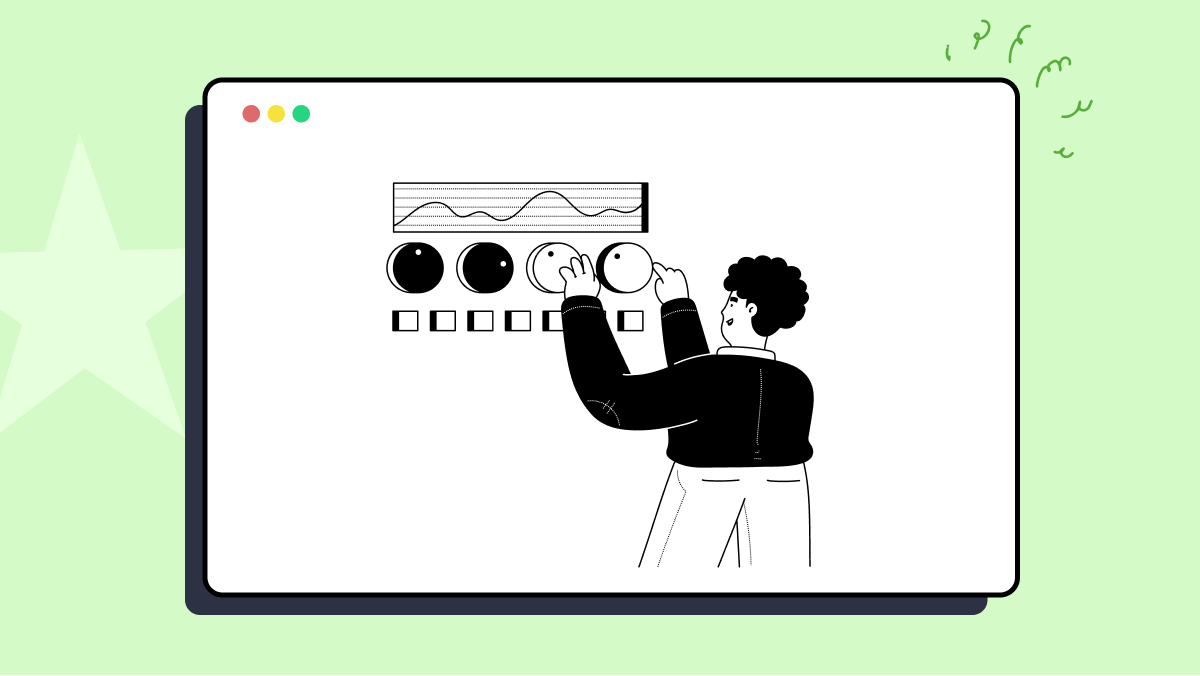How to use scanJar method of org.evomaster.client.java.instrumentation.ClassScanner class
Best EvoMaster code snippet using org.evomaster.client.java.instrumentation.ClassScanner.scanJar
Source: ClassScanner.java
...50 String path = file.getAbsolutePath();51 if(file.isDirectory()){52 scanDirectory(prefixes, names, file, path);53 } else if(path.endsWith(".jar")){54 scanJar(prefixes, names, path);55 }56 } catch (Exception e) {57 SimpleLogger.error("Error while parsing URL " + url);58 continue;59 }60 }61 }62 loader = loader.getParent();63 }64 }65 private static void scanDirectory(List<String> prefixes,66 Set<ClassName> names,67 File directory,68 String classPathFolder) {69 if (!directory.exists() || !directory.isDirectory()) {70 return;71 }72 if (!directory.canRead()) {73 SimpleLogger.warn("No permission to read: " + directory.getAbsolutePath());74 return;75 }76 for (File file : directory.listFiles()) {77 String relativeFilePath = file.getAbsolutePath()78 .replace(classPathFolder + File.separator, "");79 if (file.isDirectory() && isAPotentialPrefix(relativeFilePath, prefixes)) {80 // recursion till we get to a file that is not a folder.81 scanDirectory(prefixes, names, file, classPathFolder);82 } else {83 if (!file.getName().endsWith(".class")) {84 continue; // we are only interested in class files85 }86 ClassName className = ClassName.get(relativeFilePath);87 if(isAMatch(className.getFullNameWithDots(), prefixes)){88 names.add(className);89 }90 }91 }92 }93 private static boolean isAPotentialPrefix(String folder, List<String> prefixes){94 final String p = folder.replace(File.separatorChar, '.');95 return prefixes.stream()96 .anyMatch(s -> s.startsWith(p));97 }98 private static boolean isAMatch(String name, List<String> prefixes){99 return prefixes.stream()100 .anyMatch(s -> name.startsWith(s));101 }102 private static void scanJar(List<String> prefixes,103 Set<ClassName> names,104 String jarEntry) {105 try(JarFile zf = new JarFile(jarEntry)) {106 Enumeration<?> e = zf.entries();107 while (e.hasMoreElements()) {108 JarEntry ze = (JarEntry) e.nextElement();109 String entryName = ze.getName();110 if (!entryName.endsWith(".class")) {111 continue;112 }113 ClassName className = ClassName.get(entryName);114 if(isAMatch(className.getFullNameWithDots(), prefixes)){115 names.add(className);116 }...scanJar
Using AI Code Generation
1List<Class<?>> classes = ClassScanner.scanJar("jarfile.jar");2List<Class<?>> classes = ClassScanner.scanJar("jarfile.jar", "com.package.name");3List<Class<?>> classes = ClassScanner.scanJar("jarfile.jar", "com.package.name", "ClassName");4List<Class<?>> classes = ClassScanner.scanJar("jarfile.jar", "com.package.name", "ClassName");5List<Class<?>> classes = ClassScanner.scanJar("jarfile.jar", "com.package.name", "ClassName", "ClassName");6List<Class<?>> classes = ClassScanner.scanJar("jarfile.jar", "com.package.name", "ClassName", "ClassName", "ClassName");scanJar
Using AI Code Generation
1import java.io.File;2import java.io.IOException;3import java.util.List;4import org.evomaster.client.java.instrumentation.ClassScanner;5public class ScanJarFile {6 public static void main(String[] args) throws IOException {7 File jarFile = new File("myJarFile.jar");8 List<String> classes = ClassScanner.scanJar(jarFile);9 System.out.println(classes);10 }11}12package org.evomaster.client.java.examples.tutorial;13import com.foo.rest.examples.spring.openapi.v3.OpenApi3RestTemplate;14import com.foo.rest.examples.spring.openapi.v3.dto.*;15import org.evomaster.client.java.controller.EmbeddedSutController;16import org.evomaster.client.java.controller.api.dto.SutInfoDto;17import org.evomaster.client.java.controller.api.dto.database.operations.DatabaseCommandDto;18import org.evomaster.client.java.controller.internal.SutHandler;19import org.evomaster.client.java.controller.internal.db.SqlScriptRunner;20import org.evomaster.client.java.controller.internal.db.SqlScriptRunnerImpl;21import org.evomaster.client.java.controller.problem.ProblemInfo;22import org.evomaster.client.java.controller.problem.RestProblem;23import org.evomaster.client.java.controller.problem.RestResourceCalls;24import org.evomaster.client.java.controller.problem.RestResourceStructure;25import org.evomaster.client.java.controller.problem.rest.*;26import org.evomaster.client.java.instrumentation.ClassScanner;27import org.evomaster.client.java.instrumentation.InstrumentingClassLoader;28import org.evomaster.client.java.instrumentation.shared.ObjectiveNaming;29import org.evomaster.client.java.instrumentation.staticstate.ExecutionTracer;30import org.evomaster.client.java.instrumentation.staticstate.InitialInfo;31import org.evomaster.client.java.instrumentation.staticstatescanJar
Using AI Code Generation
1import org.evomaster.client.java.instrumentation.ClassScanner;2import java.io.File;3import java.io.IOException;4import java.nio.file.Files;5import java.nio.file.Path;6import java.nio.file.Paths;7import java.util.List;8public class ScanJar {9 public static void main(String[] args) throws IOException {10 if (args.length == 0) {11 throw new IllegalArgumentException("Please specify the jar file path.");12 }13 String jarPath = args[0];14 File jarFile = new File(jarPath);15 if (!jarFile.exists()) {16 throw new IllegalArgumentException("The jar file does not exist.");17 }18 if (!jarPath.endsWith(".jar")) {19 throw new IllegalArgumentException("Please specify the jar file path.");20 }21 String jarName = jarFile.getName();22 String jsonPath = jarPath.substring(0, jarPath.length() - 4) + ".json";23 List<String> classNames = ClassScanner.scanJar(jarPath);24 String json = ClassScanner.toJson(classNames);25 Path path = Paths.get(jsonPath);26 Files.write(path, json.getBytes());27 }28}scanJar
Using AI Code Generation
1import org.evomaster.client.java.instrumentation.ClassScanner;2import java.io.File;3import java.io.FileWriter;4import java.io.IOException;5import java.util.List;6public class JarScanner {7 public static void main(String[] args) throws IOException {8 String jar = args[0];9 String classListFile = args[1];10 List<String> classes = ClassScanner.scanJar(new File(jar));11 FileWriter writer = new FileWriter(classListFile);12 for (String c : classes) {13 writer.write(c);14 writer.write("15");16 }17 writer.close();18 }19}20import org.evomaster.client.java.instrumentation.ClassScanner;21import java.io.File;22import java.io.FileWriter;23import java.io.IOException;24import java.util.List;25public class JarScanner {26 public static void main(String[] args) throws IOException {27 String jar = args[0];28 String classListFile = args[1];29 List<String> classes = ClassScanner.scanJar(new File(jar));30 FileWriter writer = new FileWriter(classListFile);scanJar
Using AI Code Generation
1import org.evomaster.client.java.instrumentation.ClassScanner;2import java.io.File;3import java.io.FileWriter;4import java.io.IOException;5public class myjarMain {6 public static void main(String[] args) throws IOException {7 String jarName = args[0];8 String jarFileName = jarName + ".jar";9 String generatedFileName = jarName + ".classes";10 File file = new File(generatedFileName);11 FileWriter writer = new FileWriter(file);12 ClassScanner.scanJar(jarFileName, writer);13 writer.close();14 }15}scanJar
Using AI Code Generation
1import org.evomaster.client.java.instrumentation.ClassScanner;2import java.util.List;3public class Main {4 public static void main(String[] args) {5 if (args.length != 1) {6 System.out.println("Please specify a jar file");7 return;8 }9 String jarFile = args[0];10 List<String> classes = ClassScanner.scanJar(jarFile);11 for (String c : classes) {12 System.out.println(c);13 }14 }15}Blogs
Check out the latest blogs from LambdaTest on this topic:
Companies are using DevOps to quickly respond to changing market dynamics and customer requirements.
Development practices are constantly changing and as testers, we need to embrace change. One of the changes that we can experience is the move from monthly or quarterly releases to continuous delivery or continuous deployment. This move to continuous delivery or deployment offers testers the chance to learn new skills.
When software developers took years to create and introduce new products to the market is long gone. Users (or consumers) today are more eager to use their favorite applications with the latest bells and whistles. However, users today don’t have the patience to work around bugs, errors, and design flaws. People have less self-control, and if your product or application doesn’t make life easier for users, they’ll leave for a better solution.
Automation Testing Tutorials
Learn to execute automation testing from scratch with LambdaTest Learning Hub. Right from setting up the prerequisites to run your first automation test, to following best practices and diving deeper into advanced test scenarios. LambdaTest Learning Hubs compile a list of step-by-step guides to help you be proficient with different test automation frameworks i.e. Selenium, Cypress, TestNG etc.
LambdaTest Learning Hubs:
- JUnit Tutorial
- TestNG Tutorial
- Webdriver Tutorial
- WebDriverIO Tutorial
- Protractor Tutorial
- Selenium 4 Tutorial
- Jenkins Tutorial
- NUnit Tutorial
- Jest Tutorial
- Playwright Tutorial
- Cypress Tutorial
- PyTest Tutorial
YouTube
You could also refer to video tutorials over LambdaTest YouTube channel to get step by step demonstration from industry experts.
Most used method in ClassScanner
Try LambdaTest Now !!
Get 100 minutes of automation test minutes FREE!!




